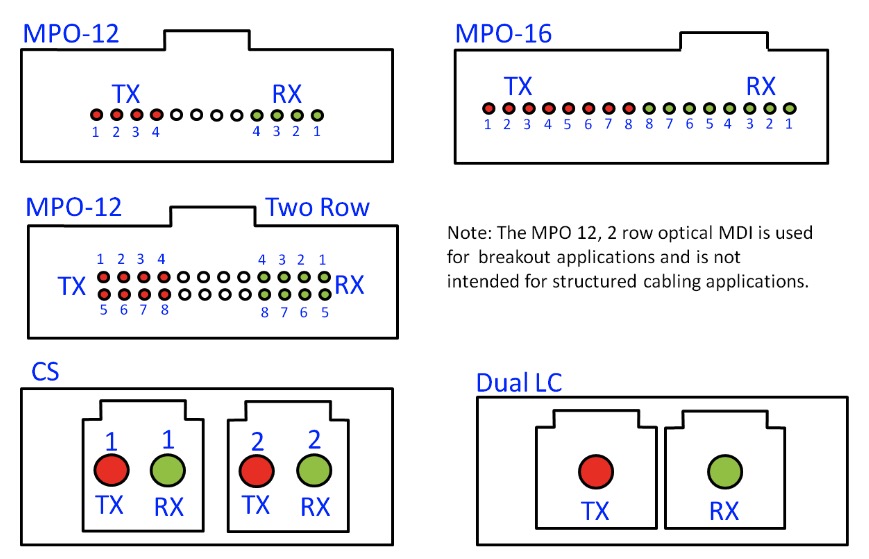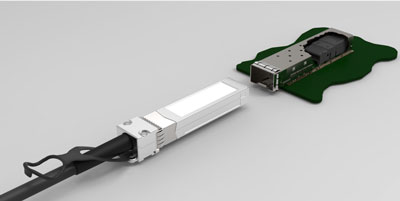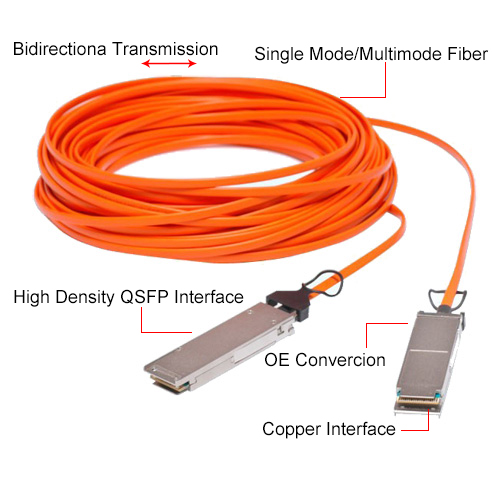The QSFP form factor is today’s industry workhorse for delivering 40 and 100GbE. The « Q » is for “quad » — a nod to the four-channel electrical interface, with each lane running at 25 Gbps for 100GbE. QSFP-DD adapts the same basic concept as its predecessor, but doubles the electrical contact density, via eight differential pairs capable of 50 Gbps each, to achieve 400GbE, while allowing existing QSFP modules to be plugged into the same cage.
Features of QSFP-DD
- Expands on the QSFP pluggable form factor, a widely adopted four-lane electrical interface
- 2×1 stacked integrated cage / connector
- SMT connector and 1xN cage
- Cage design optimizations and module case optimizations enable thermal support of at least 12w per module
- QSFP-DD electrical interfaces will employ eight lanes that operate up to 25 Gbps NRZ modulation or 50 Gbps PAM4 modulation, providing solutions up to 200 Gbps or 400 Gbps aggregate
- QSFP-DD can enable up to 14.4 Tbps aggregate bandwidth in a single switch slot
The connector’s recessed row of contacts is an alternative approach for an I/O electrical interconnect, and it demands significant innovation in the area of signal integrity to meet the 50-Gbps channel requirements currently being defined by the IEEE and the Optical Internetworking Forum (OIF). In addition, the baseline requirement to offer backwards compatibility to existing 40 and 100GbE modules means that the mechanical envelope is limited for possible expansion for the new 400GbE optical and electrical subcomponents.
The QSFP-DD MSA has specified two versions. Type 1 is extended in length only enough to accommodate the recessed extra row of contacts for the electrical interface; Type 2 is extended 15 mm further outside of the equipment faceplate for additional packaging volume inside the module.Thermal management is achieved through improvements to cage design, building on the experience of system designs with QSFP; the module can use riding heat sink technology. External non-integrated heat sinks can be incorporated as part of an optimized system design. The specification’s design is intended to support modules up to at least 12 W. Thermal resistance of a riding heat sink in the past has been at 5 W power levels, and aiming for 10 to 12 W is a significant increase in technical performance.
Connectors for QSFP-DD Optical Transceivers
The QSFP-DD optical interface port shall be either a male MPO receptacle, a dual LC or a CS connector. The recommended location and numbering of the optical ports for each of the Media Dependent Interfaces is shown as follow. The transmit and receive optical lanes shall occupy the positions when looking into the MDI receptacle with the connector keyway feature on top.








